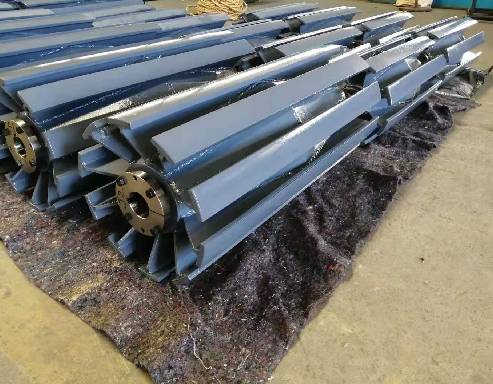 Afrikaans
Afrikaans  Albanian
Albanian  Amharic
Amharic  Arabic
Arabic  Armenian
Armenian  Azerbaijani
Azerbaijani  Basque
Basque  Belarusian
Belarusian  Bengali
Bengali  Bosnian
Bosnian  Bulgarian
Bulgarian  Catalan
Catalan  Cebuano
Cebuano  Corsican
Corsican  Croatian
Croatian  Czech
Czech  Danish
Danish  Dutch
Dutch  English
English  Esperanto
Esperanto  Estonian
Estonian  Finnish
Finnish  French
French  Frisian
Frisian  Galician
Galician  Georgian
Georgian  German
German  Greek
Greek  Gujarati
Gujarati  Haitian Creole
Haitian Creole  hausa
hausa  hawaiian
hawaiian  Hebrew
Hebrew  Hindi
Hindi  Miao
Miao  Hungarian
Hungarian  Icelandic
Icelandic  igbo
igbo  Indonesian
Indonesian  irish
irish  Italian
Italian  Japanese
Japanese  Javanese
Javanese  Kannada
Kannada  kazakh
kazakh  Khmer
Khmer  Rwandese
Rwandese  Korean
Korean  Kurdish
Kurdish  Kyrgyz
Kyrgyz  Lao
Lao  Latin
Latin  Latvian
Latvian  Lithuanian
Lithuanian  Luxembourgish
Luxembourgish  Macedonian
Macedonian  Malgashi
Malgashi  Malay
Malay  Malayalam
Malayalam  Maltese
Maltese  Maori
Maori  Marathi
Marathi  Mongolian
Mongolian  Myanmar
Myanmar  Nepali
Nepali  Norwegian
Norwegian  Norwegian
Norwegian  Occitan
Occitan  Pashto
Pashto  Persian
Persian  Polish
Polish  Portuguese
Portuguese  Punjabi
Punjabi  Romanian
Romanian  Russian
Russian  Samoan
Samoan  Scottish Gaelic
Scottish Gaelic  Serbian
Serbian  Sesotho
Sesotho  Shona
Shona  Sindhi
Sindhi  Sinhala
Sinhala  Slovak
Slovak  Slovenian
Slovenian  Somali
Somali  Spanish
Spanish  Sundanese
Sundanese  Swahili
Swahili  Swedish
Swedish  Tagalog
Tagalog  Tajik
Tajik  Tamil
Tamil  Tatar
Tatar  Telugu
Telugu  Thai
Thai  Turkish
Turkish  Turkmen
Turkmen  Ukrainian
Ukrainian  Urdu
Urdu  Uighur
Uighur  Uzbek
Uzbek  Vietnamese
Vietnamese  Welsh
Welsh  Bantu
Bantu  Yiddish
Yiddish  Yoruba
Yoruba  Zulu
Zulu take up pulley
Understanding the Take-Up Pulley Function and Applications
In many mechanical systems, especially in the realm of industrial machinery, the take-up pulley plays a crucial role. It serves as a component responsible for maintaining the proper tension in a conveyor belt or flexible cable system. Understanding its functionality and applications can help industries improve efficiency and reduce maintenance costs.
What is a Take-Up Pulley?
A take-up pulley is essentially a pulley equipped with a mechanism to adjust the tension of a belt or cable system dynamically. It is used in various machines where belts or cables are pivotal for movement or energy transfer. The take-up system allows for slight adjustments to be made as the materials wear down or stretch over time, thereby ensuring optimal performance and longevity of the equipment.
How Does a Take-Up Pulley Work?
The primary function of a take-up pulley is to maintain tension within a belt drive system. Over time, belts can elongate due to wear and tear or environmental factors. A take-up pulley compensates for this elongation and keeps the belt tight, which is essential for effective operation. The typical setup involves a fixed pulley alongside an adjustable take-up pulley, which allows the operator to fine-tune the belt tension based on operational requirements.
When a belt loses tension, the take-up pulley can be adjusted outward, effectively increasing the belt’s length and restoring the necessary tension. Many modern take-up systems are equipped with automatic tensioning devices, which can adjust tensions without manual intervention, thereby improving efficiency and reducing downtime.
Types of Take-Up Pulleys
There are primarily two types of take-up systems manual and automatic.
1. Manual Take-Up Pulleys These systems require human intervention to adjust tension. They typically consist of a handle or lever that can be turned to move the pulley closer to or farther from a fixed point. While they are simpler and more cost-effective, they may not provide the same level of precision as automatic systems.
2. Automatic Take-Up Pulleys These are equipped with mechanical or electronic sensors that monitor tension levels continuously. They adjust the pulley position autonomously to maintain optimal tension, making them suitable for applications where consistent performance is critical.
Applications of Take-Up Pulleys
take up pulley

Take-up pulleys are widely used in various applications due to their versatility and importance in maintaining system efficiency. Some of the common sectors utilizing take-up pulleys include
- Mining and Quarrying In these industries, conveyors are used extensively to transport materials. Take-up pulleys ensure the belts remain taut, facilitating smooth transport of heavy loads over long distances.
- Manufacturing In factory settings, conveyor belts are integral to the production process. Proper tension management through take-up pulleys helps in reducing jams and ensuring consistent product movement.
- Agriculture In agricultural machinery, take-up pulleys can be found in equipment such as harvesters and balers where belts are used extensively. Maintaining tension is crucial for the reliable operation of these machines.
- Waste Management In recycling facilities, conveyor systems are vital for transporting materials. Take-up pulleys help ensure that systems run efficiently and safely, reducing the risk of material spillage or operational errors.
Benefits of Using Take-Up Pulleys
Implementing take-up pulleys in machinery provides several benefits
1. Improved Efficiency By maintaining optimal tension, machinery can operate at peak efficiency, reducing energy costs and enhancing productivity.
2. Extended Lifespan of Components Proper tension reduces wear on both the belt and the associated machinery, leading to lower replacement costs and longer equipment lifespan.
3. Reduced Downtime Automatic tensioning can significantly decrease the need for constant checks and manual adjustments, leading to less downtime and higher operational availability.
4. Enhanced Safety Properly tensioned belts reduce the risk of slips or breaks, contributing to a safer work environment.
In conclusion, the take-up pulley is an essential component in various machinery that utilizes belts and cables. Understanding its function and significance can lead to improved maintenance and operational efficiency, making it a focal point for industries reliant on belt-driven systems. As technology advances, the evolution of take-up mechanisms will likely bring about further innovations, further enhancing their utility across different sectors.
-
Revolutionizing Conveyor Reliability with Advanced Rubber Lagging PulleysNewsJul.22,2025
-
Powering Precision and Durability with Expert Manufacturers of Conveyor ComponentsNewsJul.22,2025
-
Optimizing Conveyor Systems with Advanced Conveyor AccessoriesNewsJul.22,2025
-
Maximize Conveyor Efficiency with Quality Conveyor Idler PulleysNewsJul.22,2025
-
Future-Proof Your Conveyor System with High-Performance Polyurethane RollerNewsJul.22,2025
-
Driving Efficiency Forward with Quality Idlers and RollersNewsJul.22,2025





























